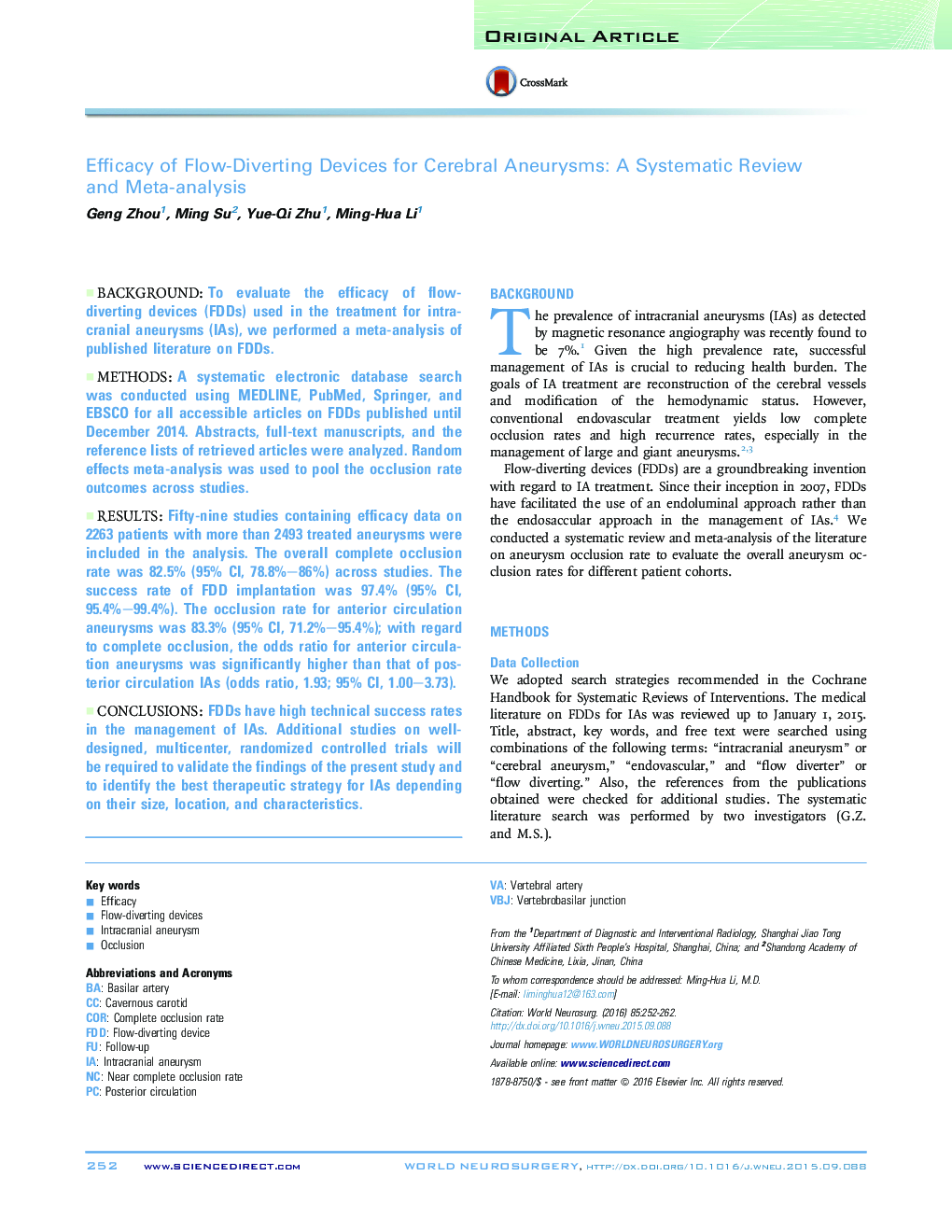| Article ID | Journal | Published Year | Pages | File Type |
|---|---|---|---|---|
| 3094902 | World Neurosurgery | 2016 | 11 Pages |
BackgroundTo evaluate the efficacy of flow-diverting devices (FDDs) used in the treatment for intracranial aneurysms (IAs), we performed a meta-analysis of published literature on FDDs.MethodsA systematic electronic database search was conducted using MEDLINE, PubMed, Springer, and EBSCO for all accessible articles on FDDs published until December 2014. Abstracts, full-text manuscripts, and the reference lists of retrieved articles were analyzed. Random effects meta-analysis was used to pool the occlusion rate outcomes across studies.ResultsFifty-nine studies containing efficacy data on 2263 patients with more than 2493 treated aneurysms were included in the analysis. The overall complete occlusion rate was 82.5% (95% CI, 78.8%–86%) across studies. The success rate of FDD implantation was 97.4% (95% CI, 95.4%–99.4%). The occlusion rate for anterior circulation aneurysms was 83.3% (95% CI, 71.2%–95.4%); with regard to complete occlusion, the odds ratio for anterior circulation aneurysms was significantly higher than that of posterior circulation IAs (odds ratio, 1.93; 95% CI, 1.00–3.73).ConclusionsFDDs have high technical success rates in the management of IAs. Additional studies on well-designed, multicenter, randomized controlled trials will be required to validate the findings of the present study and to identify the best therapeutic strategy for IAs depending on their size, location, and characteristics.
